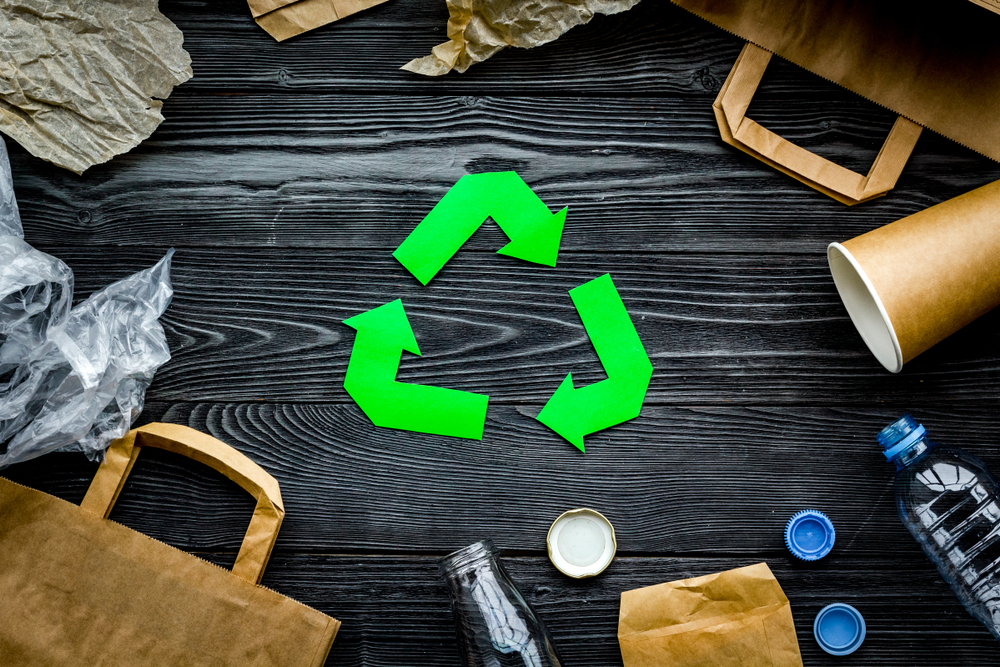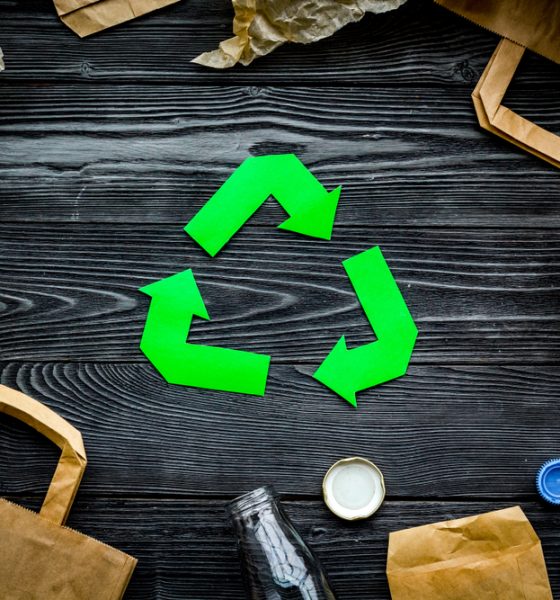

Business
5 Tips To Achieve Greener Packaging
Consumer shopping is increasingly moving online, and at the same time, there’s an escalating conversation about why it is important to fight climate change. Fortunately, innovations in packaging can provide decent alternatives to plastics and other materials that have a high environmental impact for businesses that want to reduce their eco-footprint.
Here are 5 Tips To Achieve Greener Packaging in 2022
- Evaluate Your Packaging Practices
The first thing you should do is assess just how much packaging you truly need to ship products securely. Excessive packaging is not only an annoyance for the consumer but also sends the wrong message about sustainability.
From there, you need to determine just how environmentally friendly the materials that you are using for packaging actually are. To be regarded as sustainable, packaging needs to meet certain criteria, which include, but isn’t limited to:
– Physically designed to optimize both energy and materials
– Being cleanly sourced and manufactured
– Being safe, beneficial, and healthy to both people and communities throughout its lifecycle
– Optimized to use recycled and renewable materials
If you discover that your current packaging practices are not up to par, you should take steps to correct the course. You can find high quality sleeve packaging that is environmentally friendly.
- Use Materials That Give Plastics a Second Life
Plastic is one of the biggest contributors to pollution, both in landfills and in our oceans. With over 380 million tons of plastic produced each year, saying that there’s a lot of plastic in the world would be an understatement.
With this much plastic in circulation, there’s an opportunity to give plastic a new lease of life. Products such as recycled mailers provide an affordable and eco-conscious option for retailers to ship and customers to recycle or reuse items wherever soft plastics are accepted.
- Leverage Corn Plastics as an Alternative Material for Packaging
Companies that want to lower their environmental footprint in e-commerce need to have a wide selection of alternative packaging options to suit the shipping needs of their products in an environmentally-friendly way.
Corn plastics, which are a specific type of bioplastics, provide numerous benefits. Notable advantages include being made from a renewable source, being cost-effective, emitting fewer greenhouse gasses, and are also biodegradable.
While the material has its drawbacks, this alternative packaging option is considered less damaging to the environment compared to traditional plastics.
Compostable mailers are one such option, which is ideal for soft items like clothing or even items that aren’t fragile. Compostable mailers function in a similar way to recycled plastic mailers, but their disposal differs. While recycled plastic mailers can be recycled again, packaging made from corn plastic can be composted.
Use Compostable and Recyclable Paper Packaging
While soft plastic bags are used for shipping many items, there will always be a need for cardboard.
You can recycle cardboard numerous times, after which it is compostable, and many recycled paper products can be transformed into Kraft paper mailers or even environmentally-friendly packaging tape once their lifecycle ends.
Paper products that have been recycled severally and are compostable should also meet some criteria to be truly environmentally friendly. Criteria such as ensuring that the paper is acid-free and not treated using harmful chemicals such as sulfur and lignin will ensure that the paper is safely compostable.
- Don’t Forget About Packaging Fillers
Styrofoam inserts and peanuts are a wasteful nuisance that consumers have to dispose of. While these options are definitely not eco-friendly, they have plenty of alternatives.
Starch-based packing peanuts are one such example. They might look and function the same as those made of Styrofoam, the key difference is that they are nontoxic and made out of crop-based sources. Starch peanuts dissolve in water without leaving any waste.
Mushroom packaging is another viable packaging filler alternative. A mushroom’s root system, which is known as mycelium, is grown, harvested, and baked into a mold that forms protective cushioning inside the boxes.
Mushroom packaging is one of the most eco-friendly and sustainable alternative packaging options that can be used as a replacement for Styrofoam, bubble wrap, and other plastic fillers.
- Make Sure That Your Packaging is Labeled Clearly and Sourced Sustainably
When you send out environmentally-friendly packages, it is important not to forget to state clearly how to best dispose of or reuse the packaging materials.
Consumers are usually unsure how they should recycle packaging materials since incorrect disposal leads to unnecessary use of landfills or the rejection of recycling due to contamination.
Whether the packaging material used is compostable, recyclable, or reusable, clear labeling can help the customer do the right thing after receiving their shipment.
Stay updated! Click the Google News follow button for more news and updates.
Follow on Google NewsBusiness
How to Get Your Music on Spotify’s Algorithmic Playlists

Hey there, music maker! Let’s chat about:
* The cool types of algorithmic playlists out there
* How Spotify’s playlist magic works
* Some nifty tricks to get your tunes on these playlists
* Ways to boost your chances of playlist success
* Some final thoughts to keep you inspired
Spotify’s Algorithmic Playlists: Your New Best Friend
Wondering how to get your music featured on Spotify’s playlists? No need to stress we’ve got you covered! Here’s the lowdown;
Option 1; Create a hit song that gains 5,000 to 10,000 streams, within the two weeks of its release. Sounds challenging? Keep reading!
Option 2; Consider using our Spotify advertising campaign to boost your streams and potentially catch the attention of those playlists.
Option 3: Use Spotify ad campaign to trigger the algorithm

Let’s dig in shall we?
Promoting your music on Spotify is like amplifying your voice in a room. Those algorithmic playlists? They’re like winning lottery tickets for artists helping them connect with listeners and even securing a spot, on Spotifys curated playlists. Stuff, right?
Think of these playlists as your music’s personal matchmaker. They introduce your tunes to listeners who might never have found you otherwise. It’s like having a friend who’s always saying, “Hey, you’ve got to hear this!”
Landing on a popular algorithmic playlist can give your Spotify profile a serious boost. And if you’re lucky enough to hit a trending playlist? Well, that’s when things can really take off!
What kinds of algorithmic playlists are out there?
Spotify’s algorithm is like a DJ that knows exactly what each listener wants to hear. Here are some of its greatest hits:
Discover Weekly:
Your personal Monday mixtape, filled with new tunes and old favorites.
Daily Mix:
A fresh playlist every day, blending your faves with similar tracks.
Release Radar:
Friday’s new music party, featuring your top artists and similar sounds.
Your Library:
A mix of your likes, saves, and new releases from your favorite artists.
On Repeat:
The songs you can’t stop playing, plus some new recommendations.
Repeat Rewind:
A blast from the past, featuring your old favorites and similar tracks.
Time Capsule;
Take a trip down memory lane personalized for you.
Spotify Radio;
Craft your playlist inspired by any song, artist or music genre.

Ever wondered how Spotify creates its playlists?
Think of Spotifys algorithm, as a music enthusiast robot with a memory. It observes listener preferences examines song details, adapts, to your listening patterns and notes how people engage with songs.Pretty smart, right?
So, how do you get your song on these playlists?
You’ve got two main routes:
Option 1: Create an amazing song that gets lots of love quickly. Aim for 5,000-10,000 streams in the first couple of weeks. Remember, Spotify also looks at things like user engagement and how well your song fits different playlists.
Option 2: Give our Spotify ad campaign a try. It’s designed to boost your streams and often triggers those algorithmic playlists. Plus, the benefits often continue even after the campaign ends!
Option 3: Use a Spotify ad campaign to trigger Spotify’s algorithmic playlists.
Here are some tips to boost your chances:
- Use Spotify for Artists: It’s like your backstage pass. Fill out all the info you can when submitting your music.
- Creating music is essential. It’s a no brainer!
- Share your music; Put your songs on playlists made by users reach out to curators and promote your tracks on media platforms.
- Create your own playlists: Mix your songs with similar artists and try to gain followers.
- Keep at it: Rome wasn’t built in a day, and neither are music careers. Stay patient and persistent!
What’s next after you hit those algorithmic playlists?
Set your sights on Spotify’s editorial playlists. They’re like the Mount Everest of playlist goals and can really launch your career into the stratosphere!
Final Thoughts:
Music promotion can expose your tracks to new listeners and new potential fans. Spotify is a crucial platform to get exposed. Remember, the key to triggering these playlists is getting those streams quickly – aim for at least 5,000 in two weeks. And the more tracks you create and release, the better your chances to hit the algorithmic playlists.
You’ve got this, superstar! Now go make some noise!
Business
Best Magnetic Bracelets for Arthritis: A Comprehensive Guide


In the realm of alternative medicine, magnetic bracelets have gained popularity for their purported ability to alleviate pain, particularly in conditions like arthritis. This article delves into the realm of magnetic therapy, focusing on the best magnetic bracelets for arthritis, with a special emphasis on products designed for men.
Understanding Magnetic Therapy for Arthritis
Magnetic therapy, rooted in ancient beliefs about the healing properties of magnets, has resurfaced in modern times as a potential remedy for arthritis pain. The theory behind magnetic bracelets suggests that the magnets’ energy can interact with the body to reduce inflammation and relieve discomfort associated with arthritis.
The Science Behind Magnetic Bracelets
While the historical context of magnetic therapy is intriguing, scientific research has provided mixed results regarding the efficacy of magnetic bracelets for arthritis. Studies have shown that the strength of the magnets used in these bracelets plays a crucial role in determining their effectiveness. Higher strength magnets, typically ranging from 47 to 180 mTesla, have shown more promising results compared to weaker magnets.
Top Magnetic Bracelets for Arthritis Relief
- MagnetRX Premium Magnetic Bracelets: MagnetRX offers a range of magnetic therapy bracelets designed to provide relief for arthritis pain. Their products, crafted with premium materials like titanium and neodymium magnets, are tailored to address the specific needs of individuals with arthritis.
- Men’s Magnetic Jewelry: MagnetRX’s collection includes magnetic bracelets specifically designed for men, combining style with therapeutic benefits. These bracelets feature ultra-strength neodymium magnets and premium craftsmanship, making them a popular choice for men seeking relief from arthritis discomfort.
Choosing the Right Magnetic Bracelet
When selecting a magnetic bracelet for arthritis, it is essential to consider factors such as the strength of the magnets, the quality of materials, and the design that suits your preferences. Opting for reputable brands like MagnetRX ensures that you receive a high-quality product that aligns with your therapeutic needs.
The Controversy Surrounding Magnetic Therapy
Despite the widespread use of magnetic bracelets for pain relief, scientific consensus remains skeptical about their efficacy. While some individuals report positive outcomes from using magnetic therapy, the overall body of research suggests that the benefits may stem more from a placebo effect rather than the magnets’ actual healing properties.
Conclusion
In conclusion, magnetic bracelets have emerged as a popular alternative therapy for arthritis pain. Brands like MagnetRX offer a diverse range of magnetic jewelry tailored to address the specific needs of individuals with arthritis, including men. While the scientific community continues to debate the effectiveness of magnetic therapy, many individuals find comfort and relief in using these bracelets. When considering magnetic bracelets for arthritis, it is essential to prioritize quality, strength, and design to ensure optimal therapeutic benefits.For more information and to explore a variety of magnetic bracelets for men, visit MagnetRX – your destination for premium magnetic therapy jewelry.
-

 Artist Spotlight23 hours ago
Artist Spotlight23 hours ago“Foreign” by OKARO unleashed a symphonic declaration of independence
-

 Music5 hours ago
Music5 hours agoKyra India’s “Ohio”, An Anthem for the Brokenhearted, Rooted in Raw Emotion
-

 Music4 hours ago
Music4 hours agoDUPLEXITY’s ‘Devil In Blue’. A Sonic Sizzle With a Sinister Twist
-

 Artist Spotlight11 hours ago
Artist Spotlight11 hours agoPlasma Chasms sparks a cosmic love affair with “Interstellar Baby”
-

 Music4 hours ago
Music4 hours agoDad’s “Snake Handshake” Slithers Through Industrial Grit with Raw Aggression
-

 Music3 hours ago
Music3 hours agoJody Lynn Sprints to the Heart in Electrifying New Single ‘Running’
-

 News2 hours ago
News2 hours agoBianca Censori Defies Hotel Dress Code in Scandalous Style with Kanye West
-

 Music4 hours ago
Music4 hours agoPlayboy Fresh’s New Single, “IDWIFL,” is a High-Flying Anthem of Lavish Living

